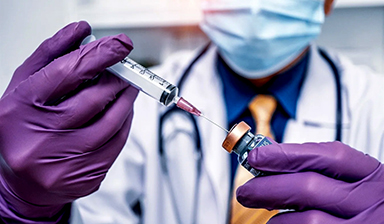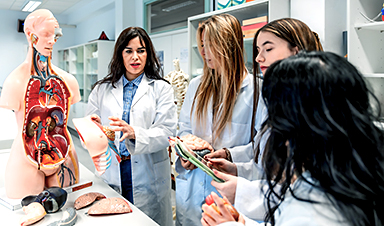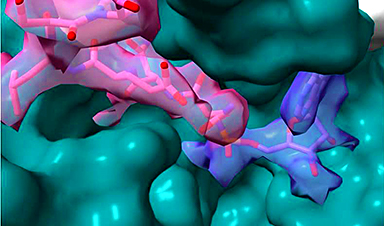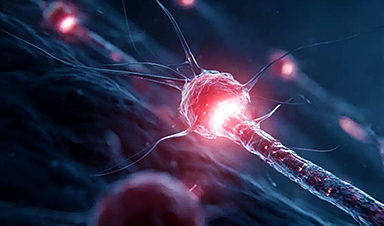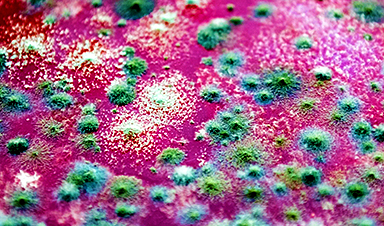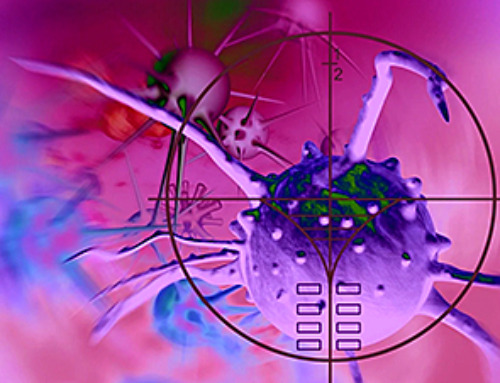In a recent article published in npj Vaccines, researchers detailed the development of a novel cancer vaccine that combines a plant-derived nanoparticle adjuvant, Nano-11, with a clinically tested STING agonist, ADU-S100. The primary objective was to enhance antitumor immunity through an innovative intradermal vaccination approach.
This study aims to address the limitations of existing cancer vaccines by improving their efficacy and safety, ultimately contributing to more effective cancer treatment strategies.
Background
Cancer remains one of the leading causes of mortality worldwide, driving the continuous search for effective therapeutic strategies. Traditional cancer treatments, such as chemotherapy and radiation, often come with significant side effects and limited specificity.
In contrast, cancer vaccines offer a promising alternative by harnessing the body’s immune system to target and eliminate tumor cells. However, many existing vaccines have shown suboptimal immune responses, highlighting the need for improved adjuvants that can enhance the effectiveness of these vaccines.
Adjuvants play a crucial role in vaccine formulation by boosting the immune response to the antigen. Nano-11, a plant-derived nanoparticle, has shown potential in preclinical studies for its ability to activate immune pathways. Additionally, ADU-S100, a synthetic STING agonist, has been recognized for its capacity to stimulate innate immune responses, particularly through the activation of dendritic cells.
The combination of these two agents is hypothesized to synergistically enhance the immune response against tumors, leading to improved therapeutic outcomes.
The Current Study
The study employed a series of well-defined experimental protocols to evaluate the efficacy of the Nano-11 and ADU-S100 combination in inducing antitumor immunity. Mice were used as the primary model organism, with specific strains selected for their relevance to cancer research. The vaccination regimen involved two intradermal injections administered 21 days apart, with groups receiving either the combination of Nano-11 and ADU-S100, individual components, or a control treatment.
To assess immune responses, various assays were conducted, including enzyme-linked immunosorbent assays (ELISA) to measure antibody titers and ELISpot assays to quantify antibody-secreting cells. Flow cytometry was utilized to analyze the phenotypic characteristics of immune cells and their activation status. Tumor growth was monitored in vivo to evaluate the therapeutic efficacy of the vaccination strategy.
Statistical analyses were performed to determine the significance of the results, employing one- or two-way ANOVA followed by appropriate post-hoc tests.
Results and Discussion
The study demonstrated that the combination of Nano-11 and ADU-S100 significantly enhanced the immune response compared to either agent alone. Mice receiving the combination vaccine exhibited higher levels of OVA-specific antibodies, indicating a robust humoral immune response. ELISpot assays revealed a marked increase in the number of antibody-secreting cells in the bone marrow of vaccinated mice, suggesting that the combination effectively stimulates B cell activation and differentiation.
Flow cytometry analyses provided insights into the cellular immune responses elicited by the vaccination. The combination treatment led to a notable increase in the activation of CD8+ T cells, which are critical for targeting and destroying tumor cells.
Enhanced cytotoxic activity was further corroborated by in vivo tumor challenge experiments, where mice vaccinated with the combination showed significantly reduced tumor growth compared to control groups. This finding underscores the potential of the Nano-11 and ADU-S100 combination to elicit a strong antitumor immune response.
The study also explored the underlying mechanisms driving the observed immune activation. The authors hypothesized that the synergistic effects of Nano-11 and ADU-S100 may be attributed to the dual activation of both innate and adaptive immune pathways.
Nano-11 likely enhances antigen presentation by dendritic cells, while ADU-S100 stimulates the production of pro-inflammatory cytokines, creating a favorable environment for T-cell activation. This multifaceted approach to immune stimulation may explain the superior efficacy of the combination vaccine.
The safety profile of the vaccination strategy was also assessed, with no significant adverse effects reported in the treated mice. This is a critical consideration for the translation of these findings into clinical applications, as safety remains a paramount concern in cancer immunotherapy.
Conclusion
The study presents compelling evidence supporting the efficacy of a novel cancer vaccine formulated with the combination of Nano-11 and ADU-S100. The findings indicate that this innovative approach significantly enhances antitumor immunity through robust activation of both humoral and cellular immune responses.
The research not only addresses the limitations of existing cancer vaccines but also provides a promising avenue for future therapeutic development. The successful demonstration of this combination in preclinical models lays the groundwork for subsequent clinical trials, with the potential to improve outcomes for cancer patients.
Overall, this study contributes valuable insights into the field of cancer immunotherapy, emphasizing the importance of adjuvant strategies in vaccine design.
Journal Reference
Hernandez-Franco, JF., et al. (2024). Intradermal vaccination with a phytoglycogen nanoparticle and STING agonist induces cytotoxic T lymphocyte-mediated antitumor immunity. npj Vaccines. DOI: 10.1038/s41541-024-00943-8, https://www.nature.com/articles/s41541-024-00943-8
News
Repurposed drugs could calm the immune system’s response to nanomedicine
An international study led by researchers at the University of Colorado Anschutz Medical Campus has identified a promising strategy to enhance the safety of nanomedicines, advanced therapies often used in cancer and vaccine treatments, [...]
Nano-Enhanced Hydrogel Strategies for Cartilage Repair
A recent article in Engineering describes the development of a protein-based nanocomposite hydrogel designed to deliver two therapeutic agents—dexamethasone (Dex) and kartogenin (KGN)—to support cartilage repair. The hydrogel is engineered to modulate immune responses and promote [...]
New Cancer Drug Blocks Tumors Without Debilitating Side Effects
A new drug targets RAS-PI3Kα pathways without harmful side effects. It was developed using high-performance computing and AI. A new cancer drug candidate, developed through a collaboration between Lawrence Livermore National Laboratory (LLNL), BridgeBio Oncology [...]
Scientists Are Pretty Close to Replicating the First Thing That Ever Lived
For 400 million years, a leading hypothesis claims, Earth was an “RNA World,” meaning that life must’ve first replicated from RNA before the arrival of proteins and DNA. Unfortunately, scientists have failed to find [...]
Why ‘Peniaphobia’ Is Exploding Among Young People (And Why We Should Be Concerned)
An insidious illness is taking hold among a growing proportion of young people. Little known to the general public, peniaphobia—the fear of becoming poor—is gaining ground among teens and young adults. Discover the causes [...]
Team finds flawed data in recent study relevant to coronavirus antiviral development
The COVID pandemic illustrated how urgently we need antiviral medications capable of treating coronavirus infections. To aid this effort, researchers quickly homed in on part of SARS-CoV-2's molecular structure known as the NiRAN domain—an [...]
Drug-Coated Neural Implants Reduce Immune Rejection
Summary: A new study shows that coating neural prosthetic implants with the anti-inflammatory drug dexamethasone helps reduce the body’s immune response and scar tissue formation. This strategy enhances the long-term performance and stability of electrodes [...]
Scientists discover cancer-fighting bacteria that ‘soak up’ forever chemicals in the body
A family of healthy bacteria may help 'soak up' toxic forever chemicals in the body, warding off their cancerous effects. Forever chemicals, also known as PFAS (per- and polyfluoroalkyl substances), are toxic chemicals that [...]
Johns Hopkins Researchers Uncover a New Way To Kill Cancer Cells
A new study reveals that blocking ribosomal RNA production rewires cancer cell behavior and could help treat genetically unstable tumors. Researchers at the Johns Hopkins Kimmel Cancer Center and the Department of Radiation Oncology and Molecular [...]
AI matches doctors in mapping lung tumors for radiation therapy
In radiation therapy, precision can save lives. Oncologists must carefully map the size and location of a tumor before delivering high-dose radiation to destroy cancer cells while sparing healthy tissue. But this process, called [...]
Scientists Finally “See” Key Protein That Controls Inflammation
Researchers used advanced microscopy to uncover important protein structures. For the first time, two important protein structures in the human body are being visualized, thanks in part to cutting-edge technology at the University of [...]
AI tool detects 9 types of dementia from a single brain scan
Mayo Clinic researchers have developed a new artificial intelligence (AI) tool that helps clinicians identify brain activity patterns linked to nine types of dementia, including Alzheimer's disease, using a single, widely available scan—a transformative [...]
Is plastic packaging putting more than just food on your plate?
New research reveals that common food packaging and utensils can shed microscopic plastics into our food, prompting urgent calls for stricter testing and updated regulations to protect public health. Beyond microplastics: The analysis intentionally [...]
Aging Spreads Through the Bloodstream
Summary: New research reveals that aging isn’t just a local cellular process—it can spread throughout the body via the bloodstream. A redox-sensitive protein called ReHMGB1, secreted by senescent cells, was found to trigger aging features [...]
AI and nanomedicine find rare biomarkers for prostrate cancer and atherosclerosis
Imagine a stadium packed with 75,000 fans, all wearing green and white jerseys—except one person in a solid green shirt. Finding that person would be tough. That's how hard it is for scientists to [...]
Are Pesticides Breeding the Next Pandemic? Experts Warn of Fungal Superbugs
Fungicides used in agriculture have been linked to an increase in resistance to antifungal drugs in both humans and animals. Fungal infections are on the rise, and two UC Davis infectious disease experts, Dr. George Thompson [...]
